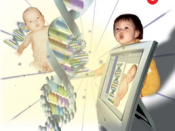The idea of cloning human beings through technological means has been a popular topic of science-fiction novels and movies throughout the decades. The benefits and implications of man creating man have long fascinated, and stupefied, humanity. However, with recent advancements in cloning technology, replicating humans may not remain just an element of sci-fi much longer. As scientists race down the cloning road without guidelines only formerly traveled by fiction writers, what impact will cloning have on society? The question of 'can we clone?' has evolved into 'should we clone?'. Currently, no know knows the repercussions of cloning a human being. This lack of knowledge as sparked numerous questions about the topic. What advances have lead to this point in cloning research, what are the pros and cons of cloning a human, what are the religious views, and why does research still continue at an alarming rate?
Natural cloning already existed in the world.
Some invertebrate animals, such as starfish and earthworms, can grow into two identical organisms when they are split apart. A fertilized egg, or zygote, can divide into two or more separate parts, producing two or more identical offspring (Dudley, p.6). In the 1980s, humans developed the technology to artificially stimulate this division of the zygote to produce two or more identical offspring. It was first used in cattle. In 1993, the first experiments in artificially stimulating twinning in humans were done by researchers in the George Washington University in Washington, D.C. However, the scientists deliberately performed their experiments on genetically abnormal embryos that had no chance of survival. (Dudley, p.7)
Another method of clone is called nuclear transplantation. In this procedure, the nucleus of a cell is transplanted into or fused with an egg whose nucleus has been removed. In the 1980s and 1990s, scientists successfully cloned...



This is brilliant
It's not often you find an essay that discusses a serious issue in an engaging and eloquent manner. Well done!
2 out of 2 people found this comment useful.